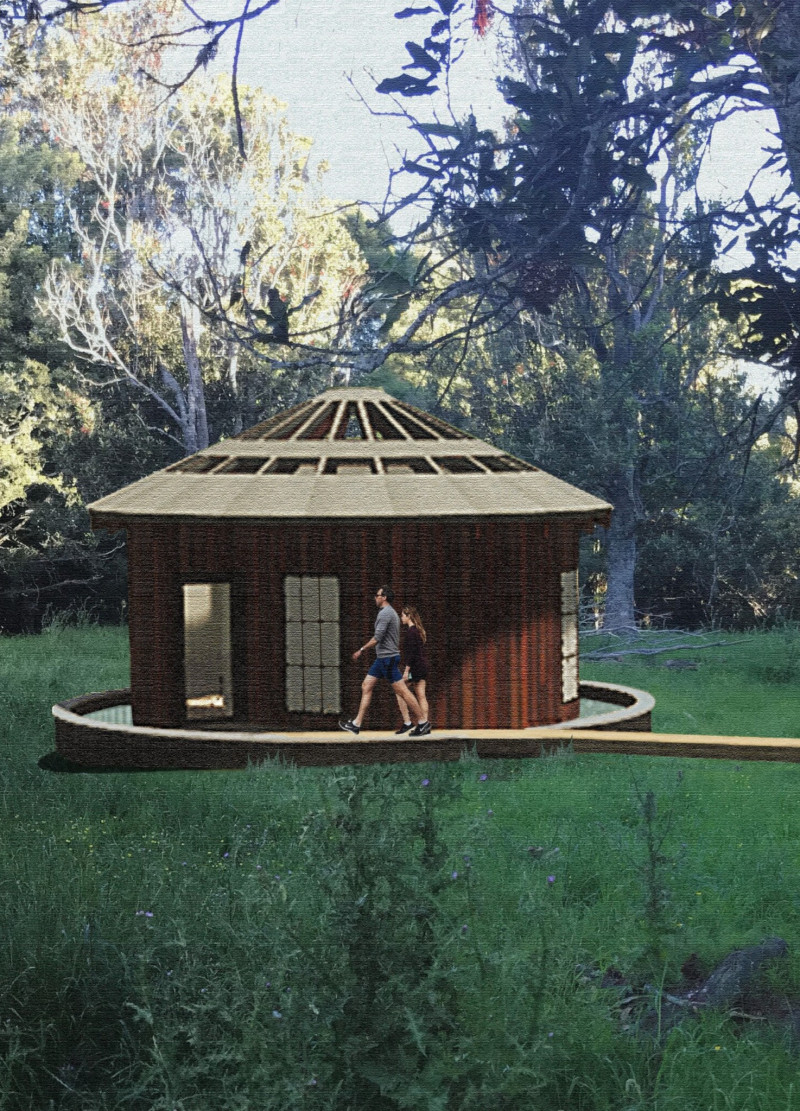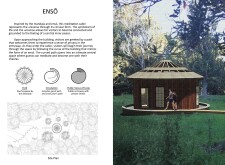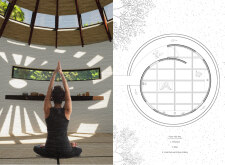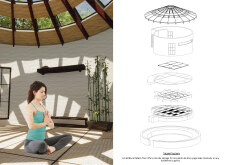5 key facts about this project
ENSŌ is a meditation cabin designed to embody the principles of the mandala and ensō, symbolizing the universe with its circular shape. Situated in a calming environment, the structure serves as a space for introspection and mindfulness, connecting individuals to their inner selves. The overall design emphasizes peace and reflection, creating an inviting atmosphere for meditation.
Concept and Symbolism
The design is rooted in the ideas of wholeness and unity, reflecting the interconnectedness of all things. The circular form is not just aesthetic; it represents the cycle of life and the universe. Upon approach, visitors follow a carefully crafted path leading to a private entryway. This pathway serves as a way to transition from the outside world into a more peaceful, contemplative space.
Spatial Dynamics
Entering ENSŌ, individuals are guided along curving pathways that echo the form of an ensō. These paths lead to a central area intended for meditation. This intimate space is designed to promote deep reflection and connection with chakras. The layout creates a sense of privacy and focus, allowing for meditation without interruptions typically found in more public places.
Material Considerations
Materials play an important role in the structure's appeal. Ipe cladding is used for its strength and natural look, enhancing the overall aesthetic while ensuring durability. The choice of soy insulation highlights a commitment to sustainability, aligning the project with eco-friendly practices. This combination of materials supports the goal of creating a serene and responsible environment.
Design Details
Attention to detail is clear throughout the cabin. The curves of the pathways and the layout of the meditation area are purposefully designed to enhance the meditative experience. Natural light floods the interior, creating a bright environment that connects users to the outside. These elements work together to invite individuals to engage deeply with their personal journeys.






















































